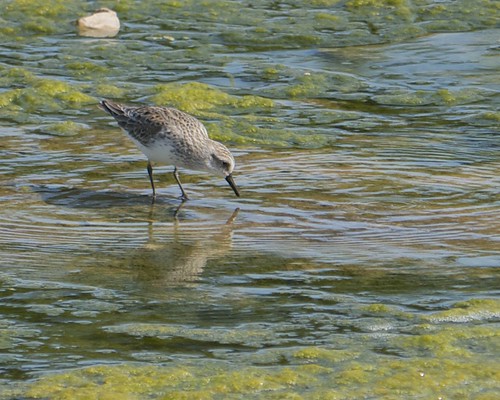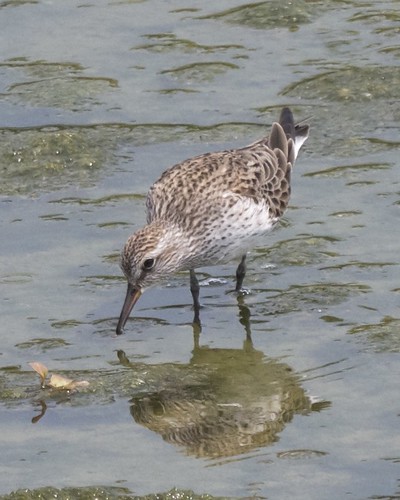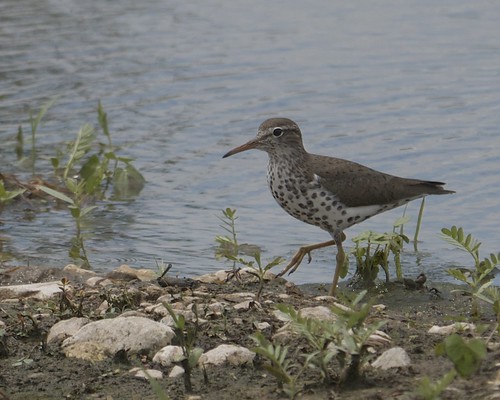In addition to the songbirds that pass through our neighborhood and Lake Creek Trail in the spring, we get an unexpected diversity of migrating shorebirds as well. These are only found on the creek, in areas where there is water that's just deep enough for these small birds to wade in while they forage for aquatic insects and other tiny animals. Often you can find them in the middle of the Town and Country Playing fields, inconspicuously foraging in the creek bed while hundreds of people cheer at baseball games on either side of them. Here are a few I've gotten to see over the last few weeks.
This Semipalmated Sandpiper was among the very similar (and much more common) Least Sandpipers on May 7. It can be told from the Leasts by its black legs and shorter straighter bill.
I'm always excited to find a few White-rumped Sandpipers this time of year. They migrate all the way from southern South America up to the Arctic to breed. And a few of them use our little creek on their way. Here's one showing a new field mark of this species that I just learned: The lower bill has a small yellow area at its base.
On Saturday I briefly walked down Lake Creek Trail in the early afternoon after the rains had passed. It was a beautiful afternoon with enough cloud cover and breeze to keep things comfortable. And it was exciting to see all the water in the creek. I came upon this Spotted Sandpiper, a much more common Sandpiper in central Texas than the other two. It's a winter resident but all winter long it's in its basic plumage which does not have the spots it's named for. Only in the spring do we get a chance to see its spots. Some change into their spotted breeding plumage before they leave, including this one. This is the best photo I've gotten of this species so far.
Two more things. Williamson County has installed three bird signs along Lake Creek Trail between the trailhead at the end of Braes Valley and the footbridge. Let me know what you think. I helped them design the signs back in 2011, and Stephen Ramirez and I supplied the photos. I tried to pick mostly common easy-to-see species and a few common but harder-to-see birds for a bit of a challenge to anyone interested.
And the NASWC Wild project at iNaturalist has reached over 230 observations of over 180 different kinds of plants and animals in our neighborhood. Check it out and help us add more!




No comments:
Post a Comment